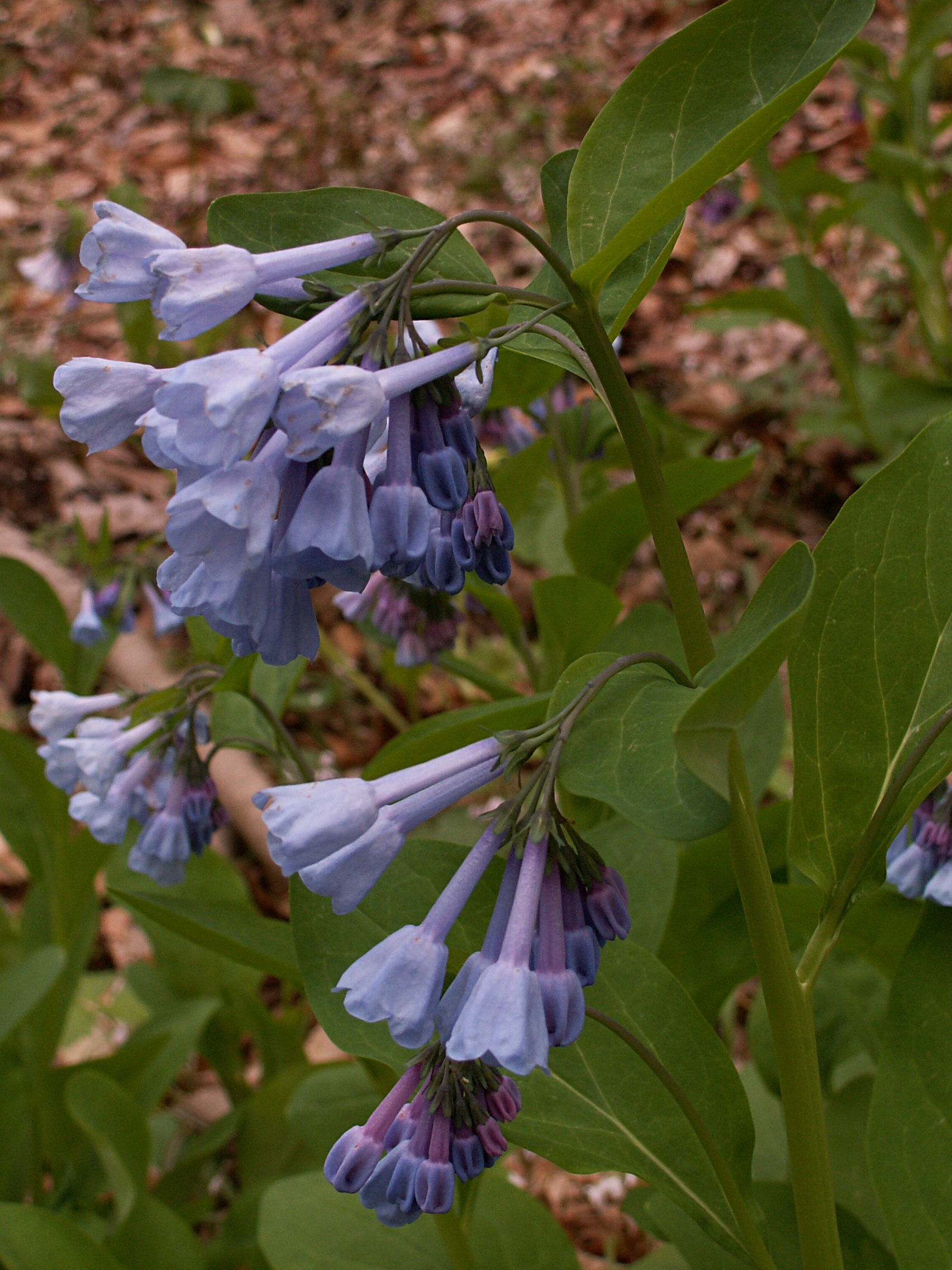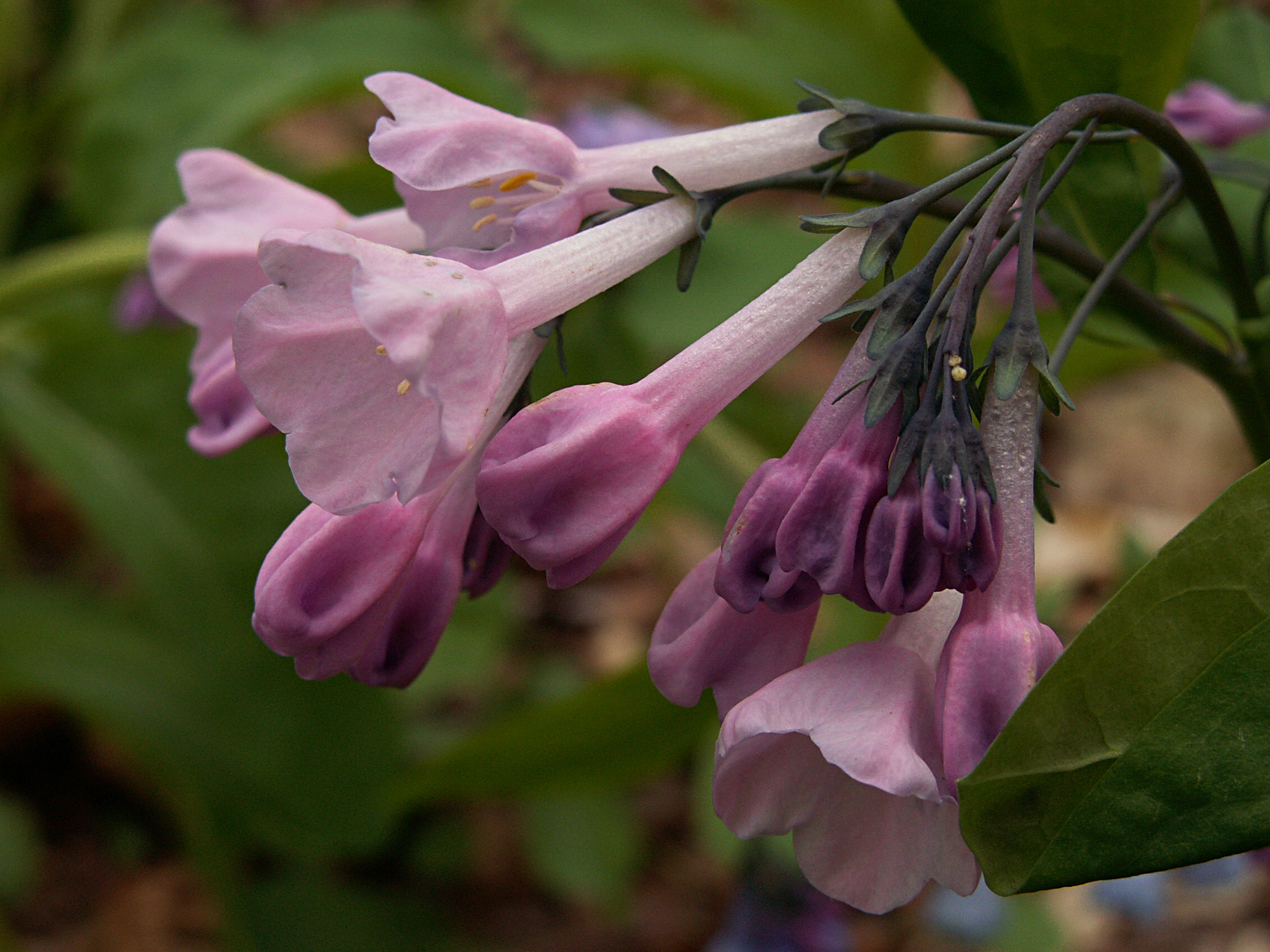 Virginia Bluebells are, as the name suggests, commonly blue. But in a large patch you may find other colors occasionally as well: pale lavender, pink, pale purple, and pure white. Here we have the complete color range from near the Trillium Trail in Fox Chapel, where they were all blooming in late April.
Virginia Bluebells are, as the name suggests, commonly blue. But in a large patch you may find other colors occasionally as well: pale lavender, pink, pale purple, and pure white. Here we have the complete color range from near the Trillium Trail in Fox Chapel, where they were all blooming in late April.
Gray describes the genus and the species (though he seems not to have run across any pink flowers):
MERTENSIA Roth. LUNGWORT
Corolla longer than the deeply 5-cleft or 5-parted calyx, naked, or with 5 small glandular folds or appendages in the open throat. Anthers oblong or arrow-shaped. Style long and thread-form. Nutlets ovoid, fleshy when fresh, smooth or wrinkled, obliquely attached by a prominent internal angle; the scar small. Smooth or soft-hairy perennial herbs, with pale and entire leaves, and handsome purplish-blue (rarely white) flowers, in loose and short panicled or corymbed raceme-like clusters, only the lower one leafy-bracted; pedicels slender. (Named for Franz Karl Mertens, a German botanist.)
Corolla trumpet-shaped, with spreading nearly entire limb and naked throat; filaments slender, exserted; hypogynous disk 2-lobed.
M. virginica (L.) Link. (VIRGINIAN COWSLIP, BLUEBELLS.) Very smooth, pale, erect, 2-6 dm. high; leaves obovate, veiny, those at the root 1-1.5 dm. long, petioled; corolla trumpet-shaped, 2-2.5 cm. long, many times exceeding the calyx, light blue (pinkish in bud), rarely white; nutlets dull and roughish. Alluvial banks, N. Y. and Ont. to Neb., and southw. Apr., May.










